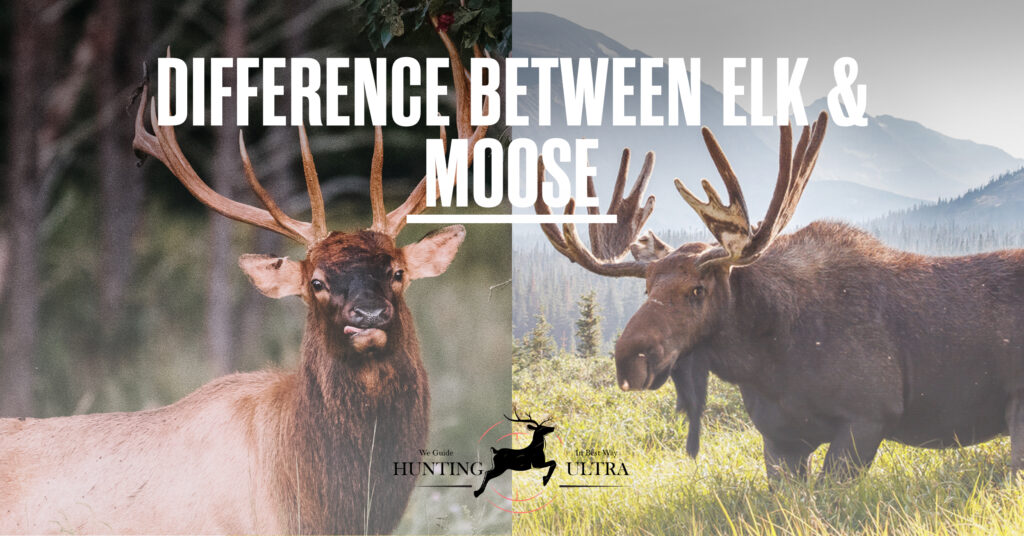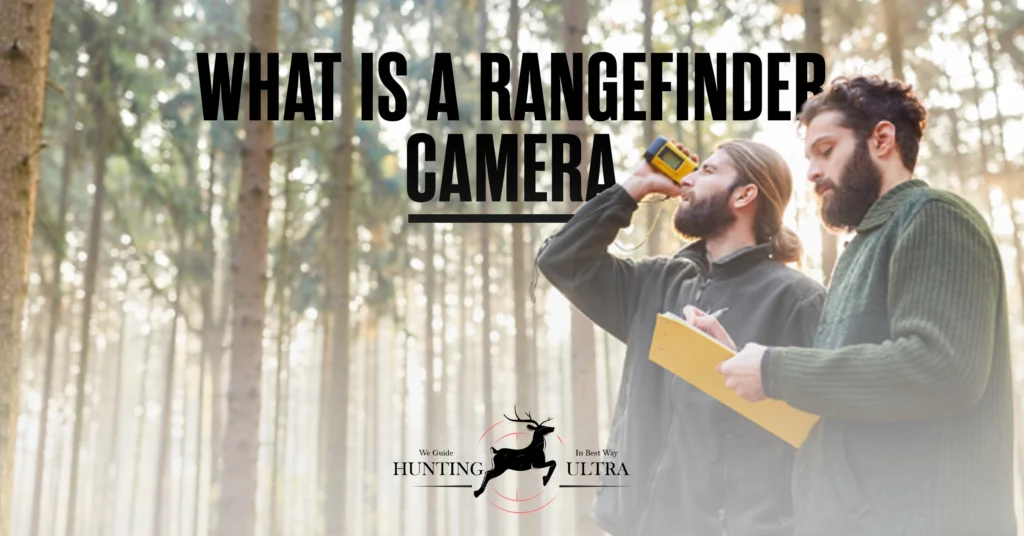Hunting season is upon us, and you’re eager to bag that prized trophy. But here’s the question: should you set your sights on an elk or a moose? What is the difference between Elk and Moose? While they might appear similar at first glance, these two magnificent creatures have several notable distinctions. In this blog post, we’ll delve into the differences between elk and moose, covering aspects like size, height, meat quality, and more. Whether you’re seeking guidance on which one to pursue or wondering which one makes for a more delicious meal, keep reading to discover all you need to know about the contrast between elk and moose.
Difference between Elk and Moose
The main difference between an elk and a moose is size. Elk are the second largest member of the deer family, with only the moose being larger. Moose can weigh up to 1,800 pounds, while elk only weigh up to 1,000 pounds. The height difference is also significant, with a moose standing up to 7 feet tall at the shoulder, while an elk only reaches 5 feet tall at the shoulder.
The antlers of an elk and a moose are also different. An elk has antlers that fork as they grow, while a moose has antlers that grow straight out from the head. Additionally, elk antlers are typically smaller than moose antlers.
When it comes to meat, there is not much difference between elk and moose. Both types of meat are lean and high in protein. Elk meat may be slightly milder in flavor than moose meat, but the two are very similar.
Elk vs Moose size
Moose and elk are both large deer species, but elk tend to be slightly bigger. A male moose stands around 6.2 to 6.9 feet tall and weighs 1,200 to 1,600 pounds on average. In comparison, male elk measure about 4.9 to 5.9 feet tall and weigh between 700 to 1,100 pounds. Generally, elk are larger than moose.
Height
There are significant differences in the height of elk and moose. Moose is the tallest deer species in the world, while elk are only slightly taller than white-tailed deer. The average height of an adult male moose is about 6.5 feet (2 meters) at the shoulder, while the average height of an adult male elk is about 5.5 feet (1.7 meters). The average height of an adult female moose is about 5.5 feet (1.7 meters), while the average height of an adult female elk is about 4.5 feet (1.4 meters).
Meat
Elk and moose are two different types of animals. Though they may look similar, there are some key differences between the two. One major difference is size. Elk are significantly smaller than moose. Moose can weigh up to 1,800 pounds, while elk only weigh up to 700 pounds. Another difference is height. Moose can stand up to 7 feet tall at the shoulder, while elk only grow to be about 5 feet tall at the shoulder.
When it comes to meat, elk, and moose are also quite different. Moose meat is darker and has a stronger flavor than elk meat. Elk meat is lighter in color and has a more delicate flavor. When preparing either type of meat, it is important to simmer it over low heat to avoid drying it out.
Physical Appearance
Elk and moose are the world’s largest deer species. Bulls (male) elk can weigh between 700-1,100 pounds (318-499 kg), while cows (female) elk weigh 400-600 pounds (181-272kg). Moose are even larger, with bulls reaching 1,500 pounds (680kg) and cows tipping the scales at 900 pounds (408kg). As you can see from these numbers, there is a significant difference in size between these two animals.
But size isn’t the only way to tell them apart. Elk have much taller antlers than moose – up to four feet tall! – while moose antlers only grow to about two and a half feet. And if you get a chance to see them side by side, you’ll notice that elk have much thinner legs than their moose cousins.
So now you know the difference between elk and moose! Next time you’re out on a hike or drive through the woods, see if you can spot these magnificent creatures yourself.
What Does A Moose Look Like?
A moose is a large, dark-colored deer with long, curved antlers. The males weigh between 1,600 and 1,800 pounds (725 and 816 kg) while the females weigh between 800 and 1,200 pounds (363 and 544 kg). The bull moose has a large body and is taller at the shoulder than any other deer species. Moose are distinguished by their long faces and large noses. Their lips are very mobile, which allows them to grasp foliage more easily.
Difference between Elk and Moose and Caribou
The three main types of deer are elk, moose, and caribou. All three are similar in many ways, but they also have some important differences.
Elk are the largest type of deer. They can weigh up to 1000 pounds and stand up to six feet tall at the shoulder. Moose are even bigger, weighing up to 1500 pounds and standing up to seven feet tall at the shoulder. Caribou is the smallest of the three, weighing up to 600 pounds and standing up to five feet tall at the shoulder.
One of the most noticeable differences between these types of deer is their antlers. Elk and moose have large, flat antlers that they use for fighting during mating season. Caribou have much smaller antlers that they shed every year.
Another difference is that elk and moose are found in North America, while caribou live in Africa, Europe, Asia, and North America. Moose are also more common in forested areas, while caribou prefer open tundra or mountainous regions.
Finally, elk and moose are herbivores that eat leaves, grasses, twigs, and bark. Caribou are mostly herbivores too, but they will also eat small amounts of meat if it’s available.
Elk vs Moose vs Caribou Size
In terms of size, moose are the largest, followed by elk, and then caribou. Moose are significantly larger than both elk and caribou, with adult moose being the heaviest and tallest of the three species. Elk are intermediate in size, and caribou are the smallest among them.
Moose vs Deer
Moose and deer are both members of the Cervidae family, which includes all species of deer, elk, moose, and reindeer. Though they share many similarities, there are also several important differences between moose and deer.
The most obvious difference is size – moose are much larger than deer. An average adult moose will weigh between 800 and 1,600 pounds (360 to 725 kg), while an average adult deer will only weigh between 150 and 400 pounds (68 to 180 kg). Moose also tend to be taller than deer, with an average height of 6.5 feet (2 m) for bulls and 5.5 feet (1.7 m) for cows, compared to an average height of 4-5 feet (1.2-1.5 m) for deer.
Another difference between moose and deer is the shape of their antlers. Both male and female moose have antlers, while only male deer have them. However, the antlers of a moose are much larger than those of a deer – a bull moose can have antlers that span up to six feet (1.8 m)! The antlers of a deer are more like branches, while the antlers of a moose are more like palms with fingers extended outward.
Finally, another difference between these two animals is their diet. Moose are mostly herbivores and prefer eating aquatic plants like water lilies
You can visit our blog: How To Get Deer To Come Out During The Day
Frequently Asked Questions
Here are some FAQs related to the difference between Elk and Moose:
Is a Moose bigger than an Elk?
Yes, a moose is bigger than an elk.
Are Elk and Moose the Same?
No, elk and moose are not the same. They are separate species with distinctive characteristics, sizes, habitats, and behaviors. While they share a common ancestry within the deer family, their differences set them apart.
Are Elk and Moose Related?
Yes, elk and moose are related in the sense that they both belong to the deer family, Cervidae. However, they are distinct species with significant genetic differences and adaptations to their respective habitats.
How big are elk compared to moose?
An elk is a species of deer that is native to North America and Europe. Moose are the largest members of the deer family, and elk are the second largest. Elk can weigh up to 1,000 pounds and moose can weigh up to 1,500 pounds. The average elk is about six feet tall at the shoulder, while the average moose is seven feet tall.
Which is more aggressive elk or moose?
Generally speaking, elk are more aggressive than moose. They are more likely to attack humans, and they are also more likely to attack other animals. Moose tend to be more docile, although they can still be dangerous if provoked.
Is Moose meat good to eat?
Moose are large, herbivorous animals that are found in North America and Europe. Moose meat is a popular game of meat that is lean and high in protein. It has a rich, beefy flavor and can be cooked in many different ways. Moose meat is a good source of iron and other nutrients and is low in fat and calories.
What is the lifespan of elk and moose in the wild?
Elk typically live for 10 to 13 years in the wild, while moose have a shorter lifespan, averaging around 8 to 12 years.
Bottom Line
In the world of wildlife, understanding the difference between elk and moose enriches our appreciation for these incredible creatures. While they share a family tree, their unique characteristics, habitats, and behaviors set them apart. The next time you encounter an imposing figure in the wilderness, you’ll be well-equipped to distinguish between these majestic animals.



